Automotive
The Ultimate Guide to Car Cleaning Kits: A Comprehensive Overview 5
The Ultimate Guide to Car Cleaning Kits: A Comprehensive Overview
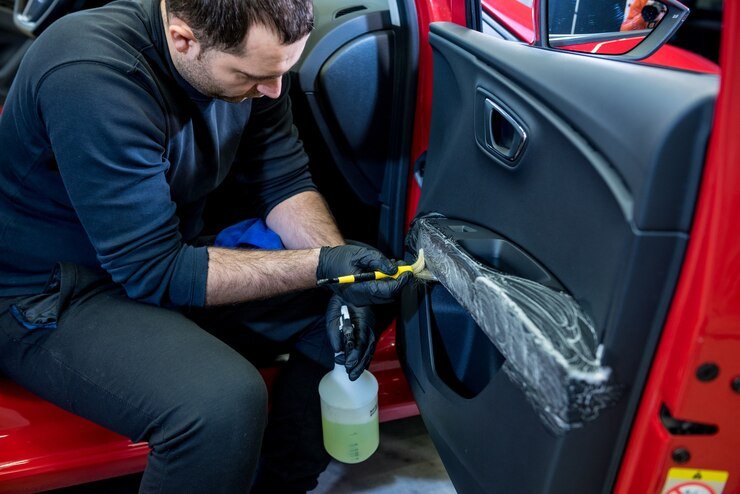
Table of Contents
Introduction:
Maintaining the cleanliness of your car is not only essential for aesthetics but also for preserving its value and longevity. However, achieving that showroom shine requires more than just a bucket of soapy water and a sponge. This is where car cleaning kits come into play. In this comprehensive guide, we’ll delve into everything you need to know about car cleaning kits, from their components to their benefits and how to choose the right one for your needs.
Understanding Car Cleaning Kits:
Car cleaning kits are bundles of various products and tools specifically designed to clean and maintain the appearance of vehicles. These kits typically include a combination of cleaning solutions, microfiber cloths, applicators, brushes, and other accessories tailored to different cleaning tasks.
Components of a Car Cleaning Kit:
- Car Wash Shampoo: A specialized shampoo formulated to gently remove dirt, grime, and contaminants from the vehicle’s surface without stripping wax or damaging the paint.
- Microfiber Cloths: These soft and lint-free cloths are ideal for wiping surfaces without scratching or leaving streaks, making them perfect for drying, buffing, and applying detailing products.
- Wheel Cleaner: Specifically designed to tackle brake dust, road grime, and other contaminants that accumulate on wheels and tires, wheel cleaner helps restore shine and protect against corrosion.
- Interior Cleaner: Whether it’s upholstery, dashboard, or trim, interior cleaner effectively removes stains, spills, and odors from various surfaces inside the car without causing damage.
- Glass Cleaner: Formulated to leave streak-free, crystal-clear windows and mirrors, glass cleaner ensures optimal visibility and safety while driving.
- Applicators and Brushes: These tools help apply cleaning products evenly and reach into crevices and tight spaces for thorough cleaning without causing scratches or damage.
Benefits of Using Car Cleaning Kits:
- Comprehensive Cleaning: Car cleaning kits provide all the necessary tools and products in one package, ensuring you have everything you need to achieve a thorough cleaning inside and out.
- Time and Cost Efficiency: Purchasing a car cleaning kit as a bundle is often more cost-effective than buying individual products separately. Additionally, having all the essentials in one place saves time on shopping and decision-making.
- Professional Results: The specialized formulas and high-quality tools included in car cleaning kits are designed to deliver professional-grade results, leaving your vehicle looking like it just rolled out of the showroom.
- Protection and Maintenance: Regular cleaning and maintenance with the products in a car cleaning kit help protect the paint, upholstery, and other surfaces from deterioration caused by dirt, UV rays, and environmental contaminants.
Choosing the Right Car Cleaning Kit:
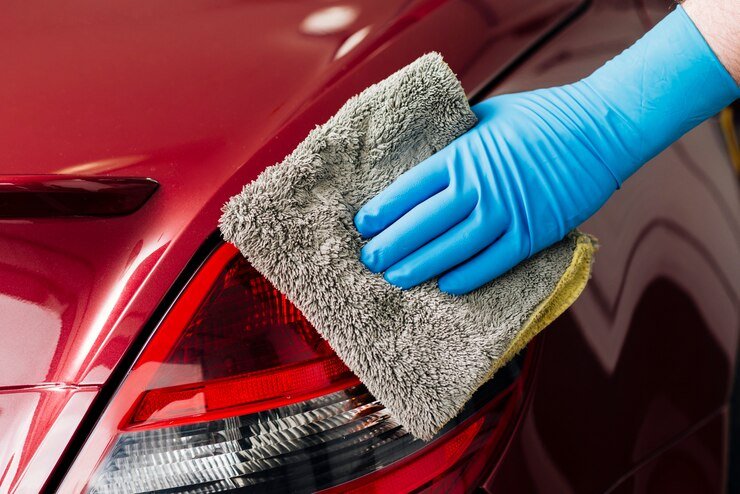
When selecting a car cleaning kit, consider the following factors:
- Type of Vehicle: Different kits may cater to specific types of vehicles, such as compact cars, SUVs, or trucks, so choose one that suits your vehicle size and requirements.
- Cleaning Needs: Assess your cleaning needs, including whether you require products for basic maintenance or specialized solutions for tasks like removing stubborn stains or restoring faded trim.
- Quality and Reputation: Opt for reputable brands known for producing high-quality car care products with positive reviews and testimonials from users.
- Budget: Determine your budget and find a car cleaning kit that offers the best value for money without compromising on quality.
Conclusion:
Investing in a car cleaning kit is an investment in the longevity and appearance of your vehicle. With the right combination of products and tools tailored to your cleaning needs, you can achieve professional-grade results and keep your car looking pristine inside and out. By understanding the components, benefits, and factors to consider when choosing a car cleaning kit, you can embark on a journey to maintain your vehicle’s shine and showroom appeal for years to come.
FAQ’s
Frequently Asked Questions (FAQs) About Car Cleaning Kits
- What is a car cleaning kit?
- A car cleaning kit is a collection of various cleaning products, tools, and accessories specifically designed to clean and maintain the appearance of vehicles both inside and out.
- What typically comes in a car cleaning kit?
- Car cleaning kits usually include essentials such as car wash shampoo, microfiber cloths, wheel cleaner, interior cleaner, glass cleaner, and applicators/brushes.
- Why should I use a car cleaning kit instead of individual products?
- Car cleaning kits offer convenience by providing all the necessary tools and products in one package. They are often more cost-effective than buying individual items separately and ensure you have everything needed for a comprehensive cleaning routine.
- Are car cleaning kits suitable for all types of vehicles?
- Yes, car cleaning kits are available for various types of vehicles, including cars, SUVs, trucks, and motorcycles. It’s essential to choose a kit that matches your vehicle size and cleaning requirements.
- Can car cleaning kits damage my vehicle’s surfaces?
- When used correctly according to the manufacturer’s instructions, car cleaning kits should not damage your vehicle’s surfaces. However, it’s crucial to avoid using abrasive tools or harsh chemicals that may cause scratches or deterioration.
- How often should I use a car cleaning kit?
- The frequency of using a car cleaning kit depends on factors such as driving habits, weather conditions, and personal preferences. Generally, regular maintenance with a car cleaning kit is recommended to keep your vehicle looking its best.
- Are all car cleaning kits the same?
- No, car cleaning kits can vary in terms of the products included, quality, and intended use. It’s essential to choose a kit that matches your specific cleaning needs and preferences.
- Can I use car cleaning kits on my car’s interior?
- Yes, car cleaning kits often include interior cleaning products specially formulated for upholstery, dashboard, and trim. These products are designed to effectively clean and protect interior surfaces without causing damage.
- Do car cleaning kits come with instructions for use?
- Yes, reputable car cleaning kits typically include instructions for use on the packaging or accompanying leaflets. It’s essential to read and follow these instructions to achieve the best results and avoid potential damage to your vehicle.
- Where can I purchase a car cleaning kit?
- Car cleaning kits are available for purchase at automotive stores, department stores, online retailers, and specialty car care shops. It’s advisable to choose a reputable brand and supplier to ensure the quality and authenticity of the products.
Automotive
Range of Services Offered by Geekzilla Autos great 6
Range of Services Offered by Geekzilla Autos

Table of Contents
Introduction to Geekzilla Autos
Geekzilla Autos is a renowned name in the automotive industry, specializing in providing top-notch services ranging from repair and maintenance to customization and restoration of vehicles.
History of Geekzilla Autos
Established in [year], Geekzilla Autos has steadily grown from a small garage to a well-known establishment, earning a reputation for excellence and innovation in the automotive sector.
Founding Years
During its inception, Geekzilla Autos was driven by a passion for automobiles and a commitment to delivering unparalleled services to its customers.
Expansion and Growth
Over the years, Geekzilla Autos expanded its operations, embracing technological advancements and modern techniques to cater to the evolving needs of its clientele.
Geekzilla Autos’ Mission and Values
At the core of Geekzilla Autos’ ethos lies a dedication to customer satisfaction, quality workmanship, and ethical business practices.
Range of Services Offered by Geekzilla Autos
Geekzilla Autos offers a comprehensive range of services tailored to meet the diverse requirements of its customers.
Repair and Maintenance

From routine maintenance tasks to complex repairs, Geekzilla Autos employs skilled technicians and utilizes cutting-edge equipment to ensure optimal performance and longevity of vehicles.
Customization
Geekzilla Autos specializes in customization services, allowing customers to personalize their vehicles according to their preferences and unique style.
Restoration
With a meticulous attention to detail, Geekzilla Autos undertakes restoration projects, breathing new life into vintage and classic automobiles, preserving their heritage for generations to come.
Geekzilla Autos’ Unique Selling Points
What sets Geekzilla Autos apart from its competitors are its commitment to excellence, innovation, and customer-centric approach.
Customer Testimonials
Don’t just take our word for it! Hear what our satisfied customers have to say about their experiences with Geekzilla Autos.
Geekzilla Autos’ Commitment to Quality
Quality is not just a buzzword at Geekzilla Autos; it’s a way of life. Each service is executed with precision and care, ensuring superior results every time.
Sustainability Practices at Geekzilla Autos
Geekzilla Autos recognizes its responsibility towards the environment and actively implements sustainable practices in its operations, minimizing its carbon footprint.
Geekzilla Autos’ Online Presence
Stay connected with Geekzilla Autos through its user-friendly website and active social media channels, where you can access valuable resources, latest updates, and exclusive offers.
Future Outlook and Expansion Plans
With a solid foundation and a vision for the future, Geekzilla Autos is poised for continued growth and success, aiming to expand its reach and enhance its services further.
Conclusion
In conclusion, Geekzilla Autos stands as a beacon of excellence in the automotive industry, offering unparalleled services backed by a commitment to quality, innovation, and customer satisfaction. Whether you’re in need of repair, customization, or restoration services, Geekzilla Autos is your ultimate destination.
FAQs
- Does Geekzilla Autos offer warranty on its services?
Yes, Geekzilla Autos provides warranty on all its services, ensuring peace of mind for its customers. - Can I schedule an appointment online?
Absolutely! You can easily schedule an appointment through Geekzilla Autos’ website or by contacting their customer service team. - Does Geekzilla Autos work on all types of vehicles?
Yes, Geekzilla Autos caters to a wide range of vehicles, including cars, trucks, motorcycles, and more. - How long does it take to complete a customization project?
The duration of a customization project varies depending on the complexity of the modifications requested. Geekzilla Autos’ team will provide you with an estimated timeline upon assessment. - Does Geekzilla Autos offer financing options?
Yes, Geekzilla Autos understands the financial aspect of automotive services and offers flexible financing options to suit your needs.
Automotive
Seam Sealer in Automotive: A Comprehensive Guide 8
Seam sealer is a formulation specifically designed to create a watertight and airtight barrier when applied to joints, seams, and gaps in automotive structures
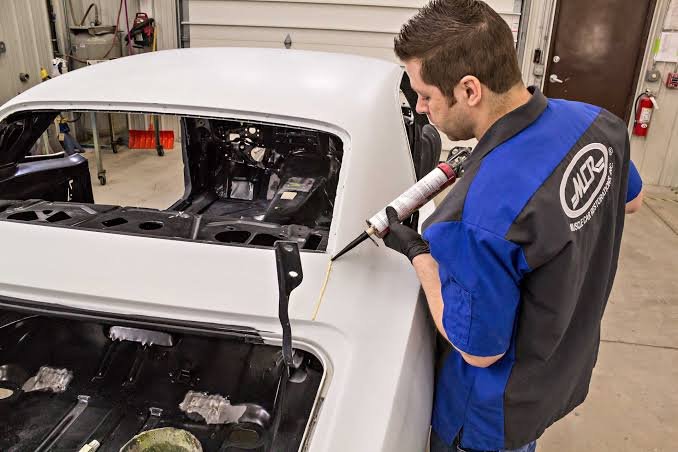
Table of Contents
In the intricate world of automotive maintenance and repair, seam sealers play a crucial role in ensuring the durability, safety, and aesthetics of vehicles. From preventing leaks to providing structural integrity, seam sealers are indispensable in both manufacturing and aftermarket automotive industries. In this comprehensive guide, we delve into the significance, types, application methods, and benefits of seam sealers in the automotive sector.
What is Seam Sealer?
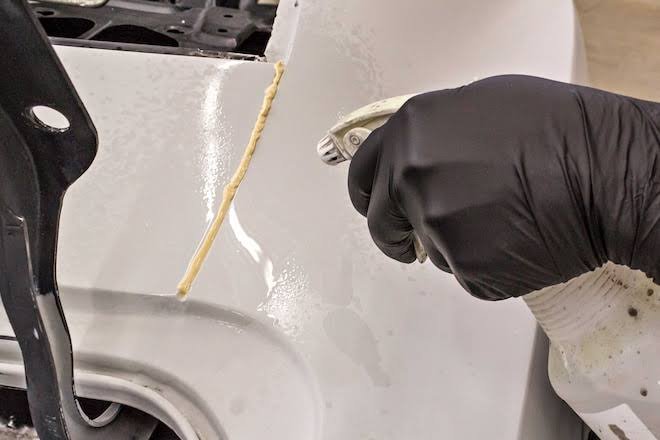
Seam sealer is a formulation specifically designed to create a watertight and airtight barrier when applied to joints, seams, and gaps in automotive structures. It acts as a protective shield, preventing moisture, dust, and other contaminants from infiltrating critical areas of the vehicle. Seam sealers are formulated to withstand the harsh conditions experienced by vehicles, including exposure to extreme temperatures, road vibrations, and environmental elements.
Significance in Automotive Maintenance and Repair
The significance of seam sealer in automotive maintenance and repair cannot be overstated. In manufacturing, seam sealers are applied during the assembly process to seal seams between body panels, weld joints, and other connections. This sealing serves multiple purposes:
1. Corrosion Prevention: By sealing off vulnerable areas from moisture and corrosive substances, seam sealers help prevent rust and corrosion, thereby extending the lifespan of the vehicle.
2. *Enhanced Structural Integrity: Properly sealed joints and seams contribute to the overall structural integrity of the vehicle, providing additional reinforcement and resistance to stresses encountered during operation.
3. Noise Reduction: Seam sealers help dampen vibrations and reduce noise transmission, resulting in a quieter and more comfortable driving experience for occupants.
In aftermarket automotive repair, seam sealers play a critical role in restoring vehicles to their original condition. Whether it’s addressing rust repairs, collision damage, or restoring classic cars, seam sealers are indispensable for maintaining the integrity and functionality of the vehicle.
Types of Seam Sealers

There are several types of seam sealers available, each with its own unique properties and applications:
1. Single-Component Seam Sealers: These seam sealers come ready-to-use and cure when exposed to air. They are easy to apply and suitable for a wide range of automotive sealing applications.
2. Two-Component Seam Sealers:
Comprising a base component and an activator, two-component seam sealers require mixing before application. They offer superior strength and durability, making them ideal for demanding automotive environments.
3. Brushable Seam Sealers: Designed for manual application using brushes or spatulas, brushable seam sealers allow for precise application in tight or hard-to-reach areas.
4. Self-Leveling Seam Sealers: These seam sealers flow and level on their own, making them ideal for horizontal surfaces and areas where a smooth finish is desired.
5. Fast-Curing Seam Sealers: With rapid curing times, fast-curing seam sealers reduce downtime and allow for faster vehicle turnaround in repair shops.
Significance in Automotive Applications
In automotive manufacturing, seam sealers are applied during the assembly process to seal seams between body panels, weld joints, and other connections. This sealing prevents corrosion, reduces noise and vibration, and enhances the overall structural integrity of the vehicle. Additionally, seam sealers contribute to the aesthetics of the vehicle by providing a smooth and uniform surface finish.
In aftermarket automotive repair, seam sealers are used to restore and maintain the integrity of vehicles during collision repair, restoration projects, and rust repairs. They are applied to replace damaged or deteriorated sealant, ensuring that repaired areas maintain the same level of protection as the original factory seal.
Types of Seam Sealers
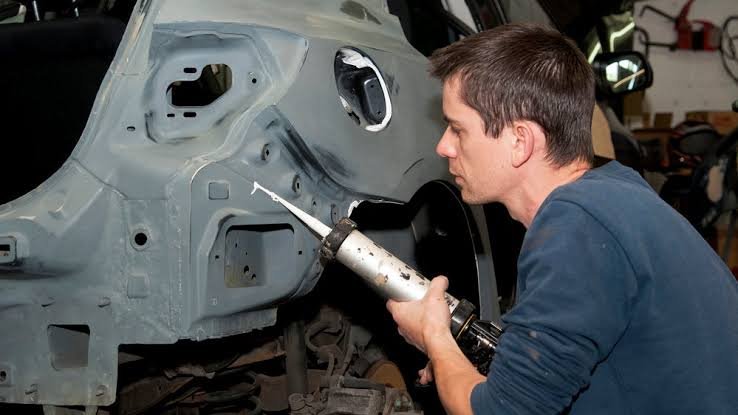
There are several types of seam sealers available, each tailored to specific automotive applications and requirements:
1. Single-Component Seam Sealers: These seam sealers come ready-to-use and cure when exposed to air. They are easy to apply and suitable for a wide range of automotive sealing applications.
2. Two-Component Seam Sealers: Consisting of a base component and an activator, two-component seam sealers require mixing before application. They offer superior strength and durability, making them ideal for demanding automotive environments.
3. Brushable Seam Sealers: As the name suggests, these seam sealers can be applied using a brush, allowing for precise application in tight or hard-to-reach areas.
4. Self-Leveling Seam Sealers: Designed to flow and level on their own, self-leveling seam sealers are ideal for horizontal surfaces and areas where a smooth finish is desired.
5. Fast-Curing Seam Sealers: These seam sealers cure rapidly, reducing downtime and allowing for faster vehicle turnaround in repair shops.
Application Methods
Seam sealers can be applied using various methods, including manual application with brushes or spatulas, pneumatic or electric caulking guns, and automated dispensing systems. The choice of application method depends on factors such as the size of the area to be sealed, the complexity of the joint, and the desired finish.
Benefits of Seam Sealers
The use of seam sealers in automotive applications offers numerous benefits:
1. Corrosion Protection: Seam sealers create a protective barrier that prevents moisture and corrosive substances from reaching vulnerable metal surfaces, thereby inhibiting rust formation.
2. Waterproofing: By sealing gaps and seams, seam sealers prevent water ingress, reducing the risk of water damage to interior components and electronics.
3. Noise Reduction: Seam sealers help dampen vibrations and reduce noise transmission, resulting in a quieter and more comfortable ride for occupants.
4. Enhanced Structural Integrity: Properly sealed joints and seams contribute to the overall structural integrity of the vehicle, improving crash resistance and occupant safety.
5. Aesthetic Improvement: Seam sealers provide a clean and professional finish, enhancing the visual appeal of automotive components and repair work.
Conclusion
Seam sealers play a vital role in automotive manufacturing and repair, providing essential protection against corrosion, water intrusion, and noise transmission. With a wide range of formulations and application methods available, seam sealers offer versatility and reliability in meeting the diverse sealing needs of vehicles. Whether applied during production or aftermarket repair, seam sealers contribute to the longevity, safety, and aesthetics of automobiles, ensuring that they remain in optimal condition for years to come.
FAQ’s
1. What is a seam sealer, and what does it do in automotive applications?
– Seam sealer is a specialized adhesive compound used to seal joints, gaps, and seams in automotive bodies, panels, and components. It creates a watertight and airtight barrier, preventing moisture, dust, and other contaminants from penetrating critical areas of the vehicle. Seam sealers are essential for corrosion prevention, structural integrity, and noise reduction in automotive applications.
2. Where are seam sealers used in automotive manufacturing?
– Seam sealers are applied during the assembly process in automotive manufacturing to seal seams between body panels, weld joints, and other connections. They are used in various areas of the vehicle, including the chassis, doors, hood, trunk, and roof, to provide protection against corrosion, enhance structural strength, and reduce noise and vibration.
3. What types of seam sealers are available for automotive applications?
– There are several types of seam sealers available for automotive use, including single-component seam sealers, two-component seam sealers, brushable seam sealers, self-leveling seam sealers, and fast-curing seam sealers. Each type has its own unique properties and applications, catering to different sealing needs and preferences.
4. How are seam sealers applied in automotive repair?
– Seam sealers can be applied using various methods, including manual application with brushes or spatulas, pneumatic or electric caulking guns, and automated dispensing systems. The choice of application method depends on factors such as the size of the area to be sealed, the complexity of the joint, and the desired finish.
5. What are the benefits of using seam sealers in automotive applications?
– The use of seam sealers in automotive applications offers several benefits, including corrosion protection, waterproofing, noise reduction, enhanced structural integrity, and aesthetic improvement. Seam sealers help prolong the lifespan of vehicles, improve driving comfort, and maintain their appearance over time.
6. Can seam sealers be used for DIY automotive projects?
– Yes, seam sealers are commonly used in DIY automotive projects, such as rust repairs, restoration projects, and aftermarket modifications. Many seam sealers are available in easy-to-use formulations that can be applied by enthusiasts and hobbyists to seal joints and seams in their vehicles.
7. Are there any safety precautions to consider when using seam sealers?
– When using seam sealers, it’s essential to follow safety guidelines provided by the manufacturer, including wearing appropriate personal protective equipment (PPE) such as gloves and eye protection. Adequate ventilation should also be ensured when working with seam sealers to minimize exposure to fumes and vapors.
8. How long does it take for seam sealers to cure?
– The curing time for seam sealers varies depending on the type of sealer, environmental conditions, and application thickness. Some seam sealers may cure within a few hours, while others may require longer curing times. It’s essential to follow the manufacturer’s instructions regarding curing times and allow sufficient time for the sealer to fully cure before subjecting it to stress or exposure to moisture.
9. Can seam sealers be painted over?
– Yes, many seam sealers are paintable once fully cured. However, it’s essential to check the compatibility of the seam sealer with the type of paint being used and follow the manufacturer’s recommendations regarding painting over cured seam sealers. Proper surface preparation and priming may be necessary to ensure adhesion and durability of the paint finish.
10. Where can I purchase seam sealers for automotive applications?
– Seam sealers for automotive applications are available at automotive supply stores, online retailers, and specialty shops catering to automotive maintenance and repair. It’s essential to choose a high-quality seam sealer suitable for the specific requirements of your automotive project and follow proper application techniques for optimal results.
Automotive
Understanding the National Automotive Policy: Driving Towards Sustainable Growth 7
In the intricate web of economic development strategies, few policies carry as much weight and significance as National Automotive Policies (NAPs National Automotive Policy.

Table of Contents
The automotive industry plays a pivotal role in the economic development of nations, serving as a catalyst for employment, technological advancement, and infrastructure growth. Recognizing its significance, many countries formulate National Automotive Policies (NAPs) to regulate and promote the growth of their automotive sectors. In this article, we delve into the essence and implications of such policies, focusing on their objectives, key components, and impact on the automotive landscape.
What is a National Automotive Policy?
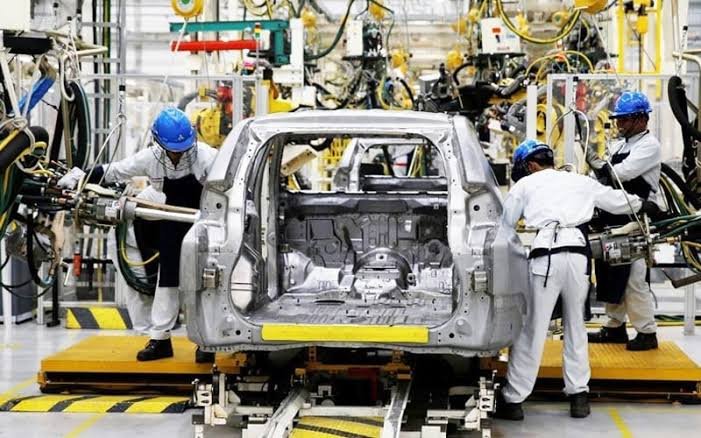
In the intricate web of economic development strategies, few policies carry as much weight and significance as National Automotive Policies (NAPs). These strategic frameworks are meticulously crafted by governments to steer the course of their automotive industries towards sustainable growth, innovation, and global competitiveness. In this article, we embark on a journey to unravel the essence of National Automotive Policies, exploring their purpose, key components, and impact on the automotive landscape.
Defining the National Automotive Policy:
At its core, a National Automotive Policy is a comprehensive blueprint devised by governments to shape the trajectory of their domestic automotive sectors. These policies encompass a wide array of measures and regulations aimed at fostering a conducive environment for automotive manufacturing, research and development, market competitiveness, and sustainability.
Objectives of National Automotive Policies:
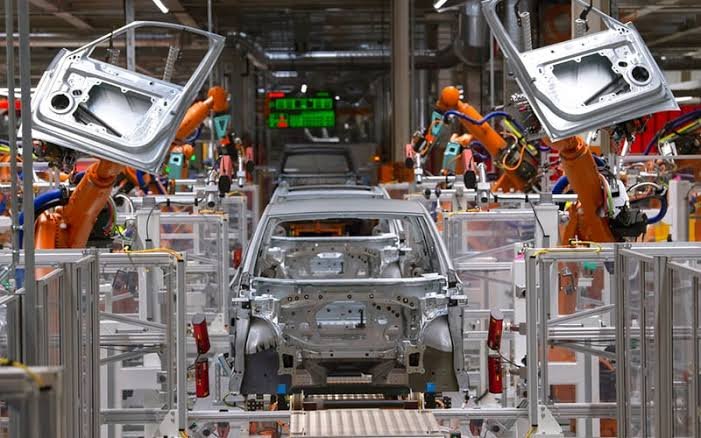
1. Economic Growth and Employment Generation:
One of the primary objectives of NAPs is to catalyze economic growth by nurturing a vibrant automotive industry. Through incentives, subsidies, and supportive measures, governments aim to attract investments, create job opportunities, and stimulate industrial development within the automotive sector.
2. Technological Advancement and Innovation:
NAPs seek to propel technological innovation within the automotive industry, fostering the development of cutting-edge technologies and solutions. By incentivizing research and development activities, governments aim to enhance product quality, efficiency, and safety while positioning domestic manufacturers at the forefront of automotive innovation.
3. Environmental Sustainability:
Addressing environmental concerns is a crucial component of NAPs. Governments strive to promote the adoption of cleaner and more fuel-efficient vehicles, reduce emissions, and encourage the development of sustainable manufacturing practices within the automotive industry, thereby contributing to environmental conservation and mitigating climate change.
4. Market Competitiveness and Global Integration:
NAPs are designed to enhance the competitiveness of domestic automotive manufacturers in both domestic and international markets. By providing support, incentives, and infrastructure development, governments aim to enable local manufacturers to compete effectively on a global scale while fostering trade relations and market access opportunities.
Key Components of National Automotive Policies:
1. Tariff and Tax Incentives:
Governments often provide tariff reductions, tax exemptions, or financial incentives to domestic automotive manufacturers to encourage local production, investment, and technological innovation.
2. Regulatory Standards and Certification:
Establishing and enforcing regulatory standards for vehicle safety, emissions, and quality control to ensure compliance with international norms and enhance consumer confidence in domestic automotive products.
3. Infrastructure Development:
Investing in infrastructure such as roads, highways, ports, and charging stations for electric vehicles to support the growth of the automotive industry and facilitate the movement of goods and people.
4. Research and Development Support:
Allocating resources for automotive research and development initiatives, fostering collaborations with academic institutions, and promoting technology transfer programs to drive innovation and enhance industry competitiveness.
5. Trade and Market Access:
Negotiating trade agreements, promoting exports, and facilitating market access for domestic automotive products through bilateral or multilateral arrangements to expand market reach and increase competitiveness.
Impact of National Automotive Policies:
National Automotive Policies have a profound impact on the automotive landscape, influencing economic, technological, and environmental outcomes. These policies contribute to GDP growth, job creation, and industrial development while fostering innovation, sustainability, and market competitiveness within the automotive industry.
Objectives of National Automotive Policies:
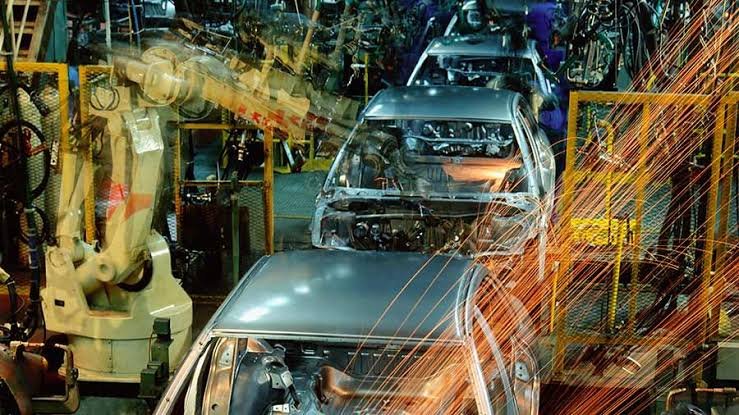
1. Economic Growth and Employment:
NAPs aim to stimulate economic growth by fostering a vibrant automotive industry, which in turn creates jobs, attracts investments, and generates revenue through taxes and exports.
2. Technological Advancement:
Encouraging research and development (R&D) activities within the automotive sector to promote innovation, enhance product quality, and integrate advanced technologies such as electric vehicles (EVs), autonomous driving systems, and sustainable manufacturing practices.
3. Environmental Sustainability:
Addressing environmental concerns by promoting the adoption of cleaner and more fuel-efficient vehicles, reducing emissions, and encouraging the development of eco-friendly technologies.
4. Market Competitiveness:
Enhancing the competitiveness of domestic automotive manufacturers through supportive policies, incentives, and infrastructure development, while also facilitating fair competition in the global market.
Key Components of National Automotive Policies:
1. Tariff and Tax Incentives:
Governments often provide tariff reductions, tax exemptions, or other financial incentives to automotive manufacturers to encourage local production, investment, and technological innovation.
2. Regulatory Standards and Certification:
Establishing regulatory standards for vehicle safety, emissions, fuel efficiency, and quality control to ensure compliance with international norms and enhance consumer confidence in domestic products.
3. Infrastructure Development:
Investing in infrastructure such as roads, highways, ports, and charging stations for electric vehicles to support the growth of the automotive industry and facilitate the movement of goods and people.
4. Research and Development Support:
Allocating funds and resources for automotive R&D initiatives, collaborations with academic institutions, and technology transfer programs to drive innovation and enhance the industry’s competitiveness.
5. Trade and Market Access:
Negotiating trade agreements, promoting exports, and facilitating market access for domestic automotive products through bilateral or multilateral arrangements to expand market reach and increase competitiveness.
Impact of National Automotive Policies:
1. Economic Growth:
NAPs contribute to GDP growth, employment generation, and industrial diversification by fostering a robust automotive ecosystem comprising manufacturers, suppliers, distributors, and service providers.
2. Technological Innovation:
By incentivizing R&D and technology adoption, NAPs stimulate innovation and promote the development of cutting-edge automotive technologies, positioning domestic manufacturers as global leaders in emerging fields such as electric and autonomous vehicles.
3. Environmental Sustainability:
Through regulations and incentives promoting cleaner vehicles and sustainable manufacturing practices, NAPs help mitigate environmental impact, reduce carbon emissions, and foster the transition towards a greener transportation system.
4. Competitiveness and Global Integration:
By enhancing the competitiveness of domestic automotive manufacturers and improving market access, NAPs enable countries to participate more effectively in the global automotive market, attracting foreign investment and strengthening trade relations.
In conclusion, National Automotive Policies serve as strategic frameworks designed to foster sustainable growth, innovation, and competitiveness within the automotive industry. By addressing economic, technological, and environmental challenges, these policies play a crucial role in shaping the future of mobility while driving socioeconomic development on a national and global scale.
FAQ’s
1. What is a National Automotive Policy (NAP)?
– A National Automotive Policy is a strategic framework devised by governments to guide and support the development of the automotive industry within their respective countries. It encompasses various measures and regulations aimed at fostering economic growth, technological innovation, environmental sustainability, and market competitiveness within the automotive sector.
2. What are the objectives of National Automotive Policies?
– The objectives of National Automotive Policies typically include stimulating economic growth, creating job opportunities, promoting technological innovation, enhancing environmental sustainability, and improving market competitiveness within the automotive industry.
3. What are the key components of National Automotive Policies?
– Key components of National Automotive Policies may include tariff and tax incentives, regulatory standards and certification, infrastructure development, research and development support, and trade and market access initiatives.
4. How do National Automotive Policies impact the automotive industry?
– National Automotive Policies have a significant impact on the automotive industry, influencing economic, technological, and environmental outcomes. These policies contribute to GDP growth, job creation, industrial development, technological innovation, environmental sustainability, and market competitiveness within the automotive sector.
5. How are National Automotive Policies implemented?
– National Automotive Policies are implemented through a combination of legislative measures, regulatory frameworks, incentive schemes, infrastructure development projects, research and development initiatives, and trade agreements negotiated by governments.
6. How do National Automotive Policies address environmental concerns?
– National Automotive Policies address environmental concerns by promoting the adoption of cleaner and more fuel-efficient vehicles, reducing emissions, encouraging the development of sustainable manufacturing practices, and enforcing regulatory standards for vehicle emissions and fuel efficiency.
7. What role do National Automotive Policies play in global trade?
– National Automotive Policies play a crucial role in global trade by influencing market access, trade agreements, export promotion initiatives, and competitiveness strategies for domestic automotive manufacturers. These policies shape the dynamics of international trade in automotive products and impact global supply chains.
8. How do National Automotive Policies support technological innovation?
– National Automotive Policies support technological innovation by incentivizing research and development activities, fostering collaborations between industry and academia, promoting technology transfer programs, and providing funding and resources for innovation initiatives within the automotive sector.
-

 fashion7 months ago
fashion7 months agoEssential Clothing Brand- Raising Your Closet Basics
-

 fashion7 months ago
fashion7 months agoTips for Choosing the Right Fabric for Your Beautiful Midi Dress
-
Tech7 months ago
A Complete Checklist on Selfie Verification – How it Works in Digital Landscape
-

 business7 months ago
business7 months agoEmpowering Businesses Through Efficient HR and Payroll Outsourcing Solutions
-

 search engine optimization7 months ago
search engine optimization7 months ago2024 Best Top 10 Key SEO Tips to Boost Your Website’s Visibility
-

 travel7 months ago
travel7 months agoTravel Deeper, Spend Smarter: Unlocking Hidden Gems on a Budget
-

 technology7 months ago
technology7 months agoThe Evolution of Cybersecurity: Comprehending the Role of Hardware Firewalls in Protecting Digital Landscapes
-

 fashion7 months ago
fashion7 months agoThe Perfect Ensemble A Guide to Choosing Baby Clothes
